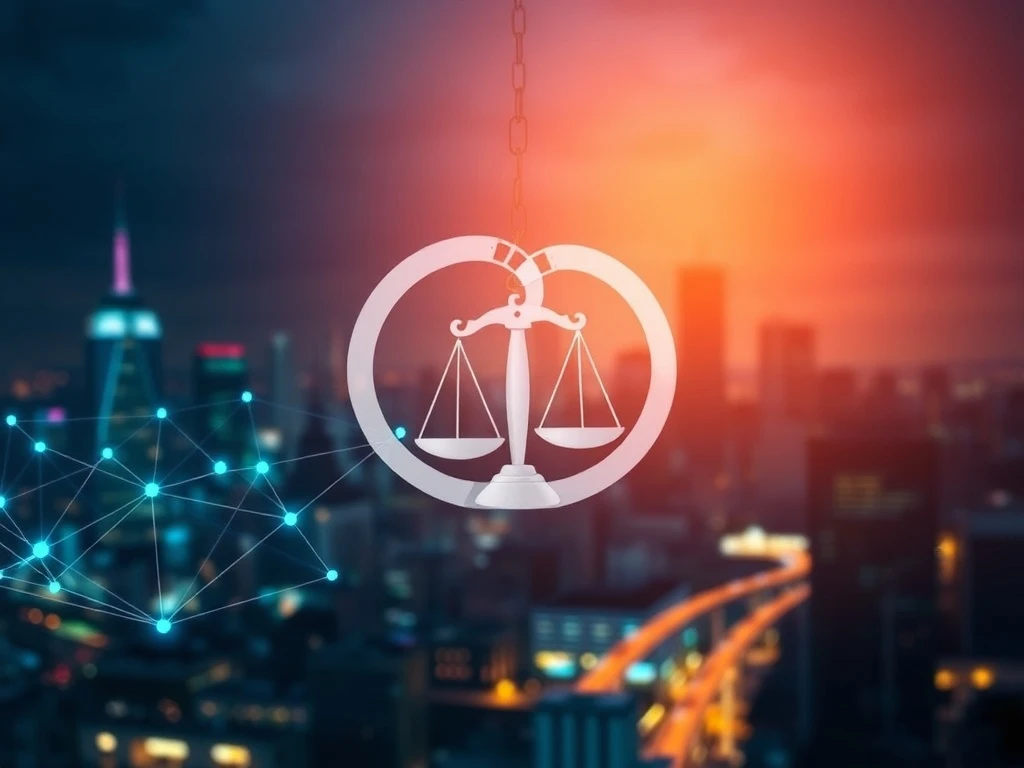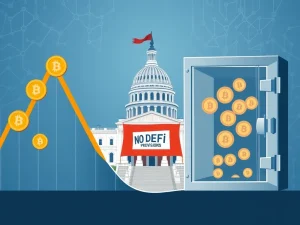Crypto Volatility: Crucial Lessons from the Shocking NYC Kidnapping Case

The chilling narrative of the 2025 NYC kidnapping case involving Italian crypto millionaire Michael Valentino Teofrasto Carturan isn’t just a sensational headline; it’s a stark reminder of the inherent crypto volatility and the evolving challenges posed by digital assets to our traditional legal systems. This incident, where alleged kidnappers John Woeltz and William Duplessie sought to extort Bitcoin credentials through brutal coercion, has become a pivotal case study for investors, regulators, and law enforcement alike. It forces us to confront the dark underbelly of the crypto world and understand the critical insights into its risks and opportunities.
The Carturan Case: Unveiling Crypto Crime’s Dark Side
The grotesque details of the Carturan case – from alleged chainsaw threats to drug-induced torture aimed at extracting a private key – laid bare the profound vulnerabilities associated with unregulated digital assets. Prosecutors argued that Woeltz and Duplessie exploited the very nature of crypto ownership, where control hinges on a private key, making physical coercion a direct path to theft.
This case, fraught with bizarre twists like the defense’s claim of consensual presence, underscored the urgent need for clear legal precedents in crypto crime. A pivotal moment arrived with the Manhattan Supreme Court’s decision to grant $1 million in cash bail to the defendants, with a crucial stipulation: it was not payable in crypto. Judge Gregory Carro’s ruling highlighted a broader judicial wariness. Allowing untraceable assets to influence legal outcomes, especially for individuals with means to exploit technological anonymity, was deemed too risky. This move signaled a significant shift in how courts view digital assets in criminal contexts, complicating asset tracking and flight risk assessments.
A New Era: The Intensification of Crypto Regulation
The Carturan case wasn’t just a standalone event; it catalyzed a wave of regulatory action, both within New York and across the nation, aiming to curb crypto crime. The U.S. Department of Justice (DOJ) intensified its focus, leading to high-profile prosecutions of platforms like BitMEX and Celsius Network for AML violations and fraudulent lending. Simultaneously, the SEC doubled down on its assertion of jurisdiction over digital assets, leveraging the Howey Test to classify tokenized securities and staking arrangements under existing securities laws.
Legislative efforts are also gaining momentum. Bills such as the Responsible Financial Innovation Act (RFIA) and the Digital Commodities Consumer Protection Act (DCCPA) aim to integrate crypto into traditional financial frameworks while addressing gaps in consumer protection. These initiatives target critical areas:
- Stablecoins: Enhanced oversight to prevent illicit use.
- Custody Requirements: Clearer rules for holding digital assets.
- Anti-Money Laundering (AML) Protocols: Strengthening measures to combat crypto crime.
For investors, this signals a profound shift. A sector once defined by its “Wild West” ethos is now being reshaped by compliance-driven norms. This increased crypto regulation is a necessary step towards legitimacy, but it also introduces new complexities for market participants.
Market Ripples: How Illicit Digital Assets Affect Investors
The prevalence of illicit activity within the crypto ecosystem presents systemic risks, contributing significantly to crypto volatility. According to Chainalysis’ 2024 report, illicit crypto activity reached an staggering $40.9 billion in value received. A notable trend is the shift from Bitcoin to stablecoins, which accounted for 63% of these illicit transactions. While stablecoins offer liquidity, making them attractive for cross-border crime, their centralized nature also allows issuers like Tether to freeze accounts linked to fraud – a double-edged sword for the security of digital assets.
The professionalization of crypto crime is alarming. Platforms like Huione have reportedly processed $70 billion in transactions since 2021, facilitating everything from pig-butchering scams to child sexual abuse material distribution. For investors, this underscores the immense risks of holding substantial sums in unregulated wallets. The Carturan case, in particular, has amplified calls for institutional-grade custody solutions. Firms like Fidelity Digital Assets and Coinbase are gaining traction as secure alternatives to self-custody, offering enhanced protection for your digital assets against such threats.
Navigating Uncertainty: Strategies for Managing Crypto Volatility
For long-term investors, the key lies in balancing exposure to crypto’s growth potential with robust strategies to mitigate its inherent crypto volatility and regulatory risks. Here’s a framework to consider:
- Diversify Beyond Bitcoin: While BTC remains prominent in ransomware and darknet markets, stablecoins and altcoins like Ethereum (ETH) offer more use cases in decentralized finance (DeFi) and institutional adoption. However, prioritize projects with clear regulatory alignment and robust AML compliance to safeguard your digital assets.
- Adopt Regulated Custody Solutions: The risks of self-custody, starkly highlighted by the Carturan case, are real. Allocate a portion of your portfolio to custodial services that offer insurance and compliance certifications. This adds a layer of security against theft and loss.
- Hedge Against Regulatory Shifts: Given the rapid evolution of crypto policy, consider hedging your crypto exposure with traditional assets or ETFs that correlate with regulatory trends. For example, gold or U.S. Treasuries can offer a buffer during enforcement crackdowns, helping to offset the impact of crypto volatility.
- Monitor Illicit Activity Indicators: Utilize tools like Chainalysis Signals to track illicit transaction volumes. A surge in stablecoin-based scams, for instance, may signal short-term market corrections or increased risk for certain digital assets. Staying informed is crucial for making timely investment decisions.
The Bail Dilemma: What Does Cash Bail Mean for Crypto Cases?
The Manhattan Supreme Court’s decision to grant $1 million in cash bail to the defendants, explicitly stating it couldn’t be paid in crypto, was more than just a procedural detail. It was a clear message from the judiciary regarding the perceived risks of digital assets in criminal proceedings. Judge Carro’s ruling emphasized the difficulty of tracing crypto assets and the potential for defendants to exploit anonymity to flee.
This decision sets a significant precedent. It reflects a broader judicial wariness of crypto’s role in criminal cases, where the lack of centralized oversight complicates traditional asset tracking and flight risk assessments. While some argue this stance hinders innovation, it underscores the legal system’s priority of accountability and public safety over the unique characteristics of digital assets. This judicial perspective will likely influence future legal battles involving crypto, pushing for greater transparency and traceability within the ecosystem.
The Michael Carturan kidnapping case has undeniably accelerated a paradigm shift in crypto investing. Investors can no longer afford to ignore the legal and ethical implications of their holdings. As regulators close loopholes and law enforcement agencies collaborate across borders to combat crypto crime, the sector will likely see a consolidation of platforms that prioritize compliance and robust security for digital assets.
This transformation presents unique opportunities for astute investors in regulated custody providers, blockchain analytics firms, and institutional-grade DeFi protocols. While the path forward might seem daunting for the uninitiated due to ongoing crypto volatility, history shows that innovation often thrives where regulation provides a clear framework. The challenge for investors is to skillfully navigate this duality – embracing crypto’s disruptive potential while rigorously safeguarding against its inherent risks. In the aftermath of the NYC kidnapping case, one truth stands clear: the future of crypto will be defined not by its anonymity, but by its alignment with the systems of accountability that underpin global finance.
Frequently Asked Questions (FAQs)
Q1: What was the significance of the NYC kidnapping case involving Michael Carturan?
A1: The case highlighted severe vulnerabilities in unregulated digital assets, demonstrating how criminals could target private keys through physical coercion. It also prompted significant discussions around crypto’s role in criminal activity and the challenges it poses to traditional legal systems, particularly regarding bail and asset traceability.
Q2: How has the Carturan case influenced crypto regulation?
A2: The incident accelerated regulatory action from agencies like the DOJ and SEC, leading to increased scrutiny of crypto platforms for AML violations and fraudulent activities. It also spurred legislative efforts (e.g., RFIA, DCCPA) aimed at integrating crypto into traditional financial frameworks and enhancing consumer protection.
Q3: Why was the $1 million cash bail decision notable in this case?
A3: The judge’s decision to grant $1 million bail, explicitly stating it could not be paid in crypto, underscored judicial concerns about the untraceable nature of digital assets. It signaled a broader wariness about crypto influencing legal outcomes, especially concerning flight risk and asset tracking in criminal cases.
Q4: What are the main risks for crypto investors highlighted by this incident?
A4: The case underscored risks such as physical threats for private key access, the prevalence of illicit crypto activity (e.g., scams, ransomware), and the general volatility of the market. It emphasized the need for secure custody solutions and awareness of regulatory changes.
Q5: How can investors better protect their digital assets after learning from this case?
A5: Investors should consider diversifying their crypto portfolios, adopting regulated custody solutions from trusted firms, hedging against regulatory shifts with traditional assets, and actively monitoring illicit activity indicators. Prioritizing projects with strong regulatory alignment and AML compliance is also crucial.









